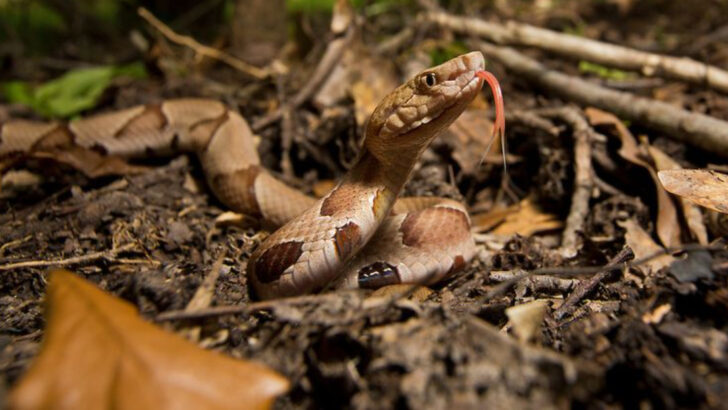Brace yourself—Iowa is home to more snakes than you might think! From harmless garden guests to slithering hunters, these 18 species paint a fascinating picture of nature’s diversity. Not all snakes are created equal. While most are shy and harmless, four venomous vipers demand your respect and caution. Their rattle or striking patterns are warnings you don’t want to ignore. Whether you’re a hiker, gardener, or curious explorer, knowing which snakes roam your backyard could save you from a scary surprise. These reptiles aren’t just creatures of fear—they’re vital players in Iowa’s ecosystem. Get ready to meet Iowa’s serpentine residents—discover who’s common, who’s dangerous, and how to spot them before they spot you. This guide is your front-row seat to the snakes slithering right underfoot!
Timber Rattlesnake
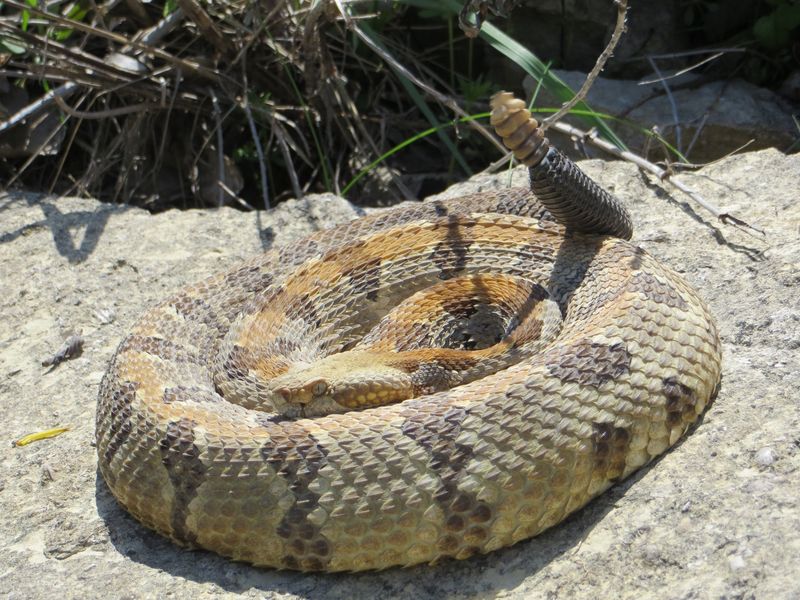
The Timber Rattlesnake, known for its impressive size and striking appearance, is a denizen of Iowa’s rugged terrain. Its distinctive rattle is a warning system, alerting passersby to its presence. Often found sunning on rocks, this snake prefers the solitude of forested hillsides and bluffs.
Despite its intimidating facade, the Timber Rattlesnake is generally shy, preferring to avoid human contact. However, it’s crucial to keep a respectful distance, as its venomous bite can be dangerous.
Fun fact: Timber Rattlesnakes play a vital role in controlling rodent populations, making them essential to the ecosystem.
Prairie Rattlesnake
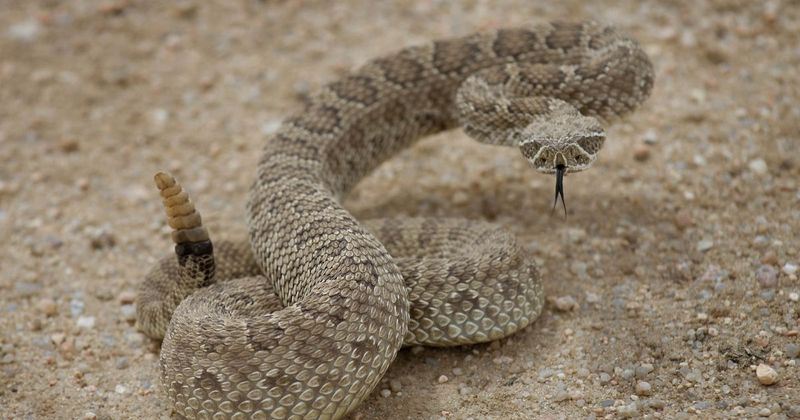
Camouflaged within the tall grasses of Iowa’s prairies, the Prairie Rattlesnake is a master of disguise. Its earthy tones blend seamlessly with its surroundings, making it a challenge to spot without caution.
Unlike some of its relatives, this rattlesnake is more likely to be encountered in open fields. Its rattle serves as both a defensive mechanism and a signal of its presence.
With a reputation for being more aggressive, it’s wise to exercise caution. Did you know? The Prairie Rattlesnake is a key player in managing the population of small mammals in its habitat.
Eastern Massasauga Rattlesnake
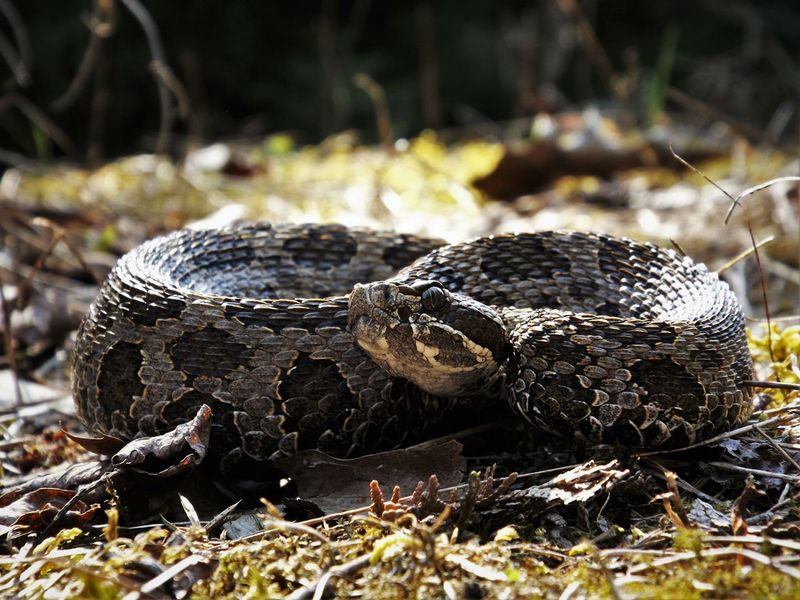
The Eastern Massasauga Rattlesnake, with its distinctive short and stocky build, is primarily found in the wetlands of Iowa. Its unique color pattern provides excellent camouflage among the reeds and grasses.
This elusive snake is often misunderstood, as it prefers to remain hidden and avoid confrontation. However, its venomous bite warrants caution and respect.
Interesting tidbit: The Eastern Massasauga is listed as a threatened species, highlighting the importance of conserving its natural habitat for future generations.
Copperhead
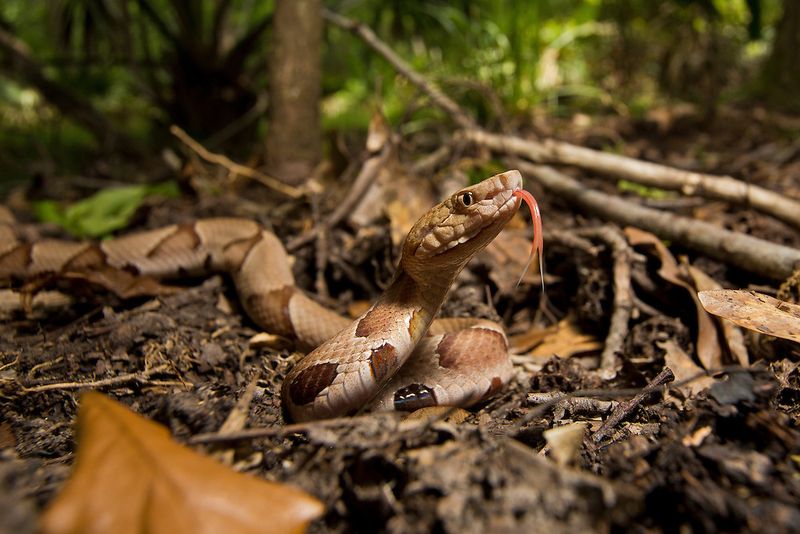
With coppery scales and distinctive hourglass markings, the Copperhead is a striking resident of Iowa’s forests. Often found basking in dappled sunlight, its coloration provides perfect camouflage against the leaf-littered forest floor.
Though not as aggressive as some other species, the Copperhead is known for its potent venom, making it a snake to respect and observe from a distance.
Did you know? The Copperhead’s diet mainly consists of small rodents, amphibians, and insects, contributing to the ecological balance of its environment.
Black Rat Snake
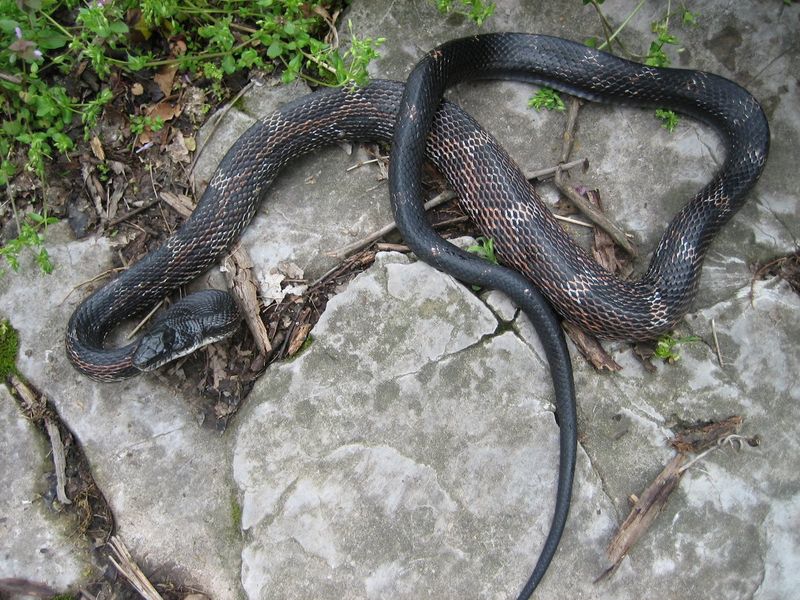
The Black Rat Snake, known for its striking black scales, is a common sight in Iowa’s woodlands. Growing up to eight feet long, their presence is hard to miss. Despite their imposing size, they’re harmless to humans. These snakes are excellent climbers, often found slithering up trees in search of birds’ nests.
Their diet mainly consists of rodents, which makes them beneficial for controlling the rodent population. A curious fact about these snakes is their ability to vibrate their tails, mimicking rattlesnakes, when threatened.
Their adaptability to different environments makes them a fascinating species to observe.
Brown Snake
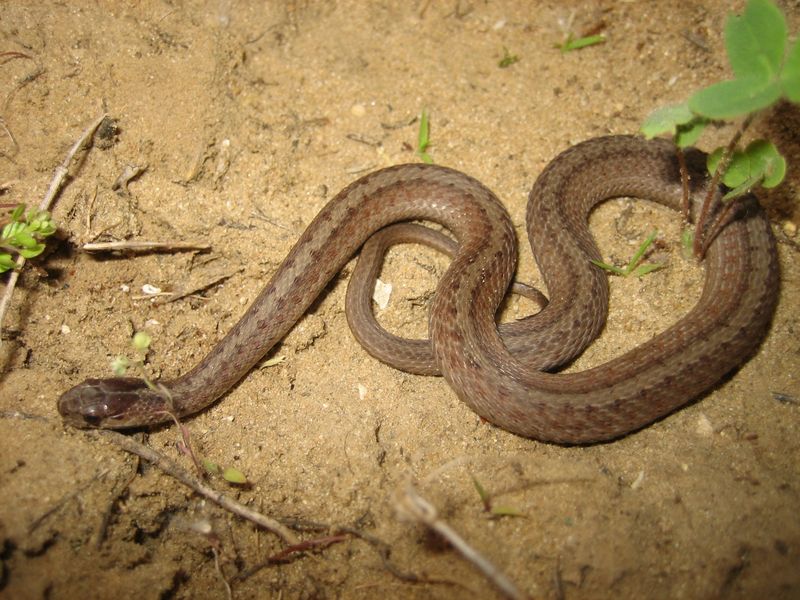
Brown Snakes, small and understated, make their homes in the moist environments of Iowa. Measuring no more than 13 inches, they are masters of disguise. Their brownish coloration helps them blend into the leaf litter, making them nearly invisible to predators.
These snakes are non-venomous and pose no threat to humans. Their diet mainly includes small invertebrates, such as slugs and earthworms.
One interesting tidbit about Brown Snakes is their communal hibernation habits, where they gather in large numbers to overwinter. Their unassuming nature is what makes them a unique feature of Iowa’s fauna.
Bullsnake
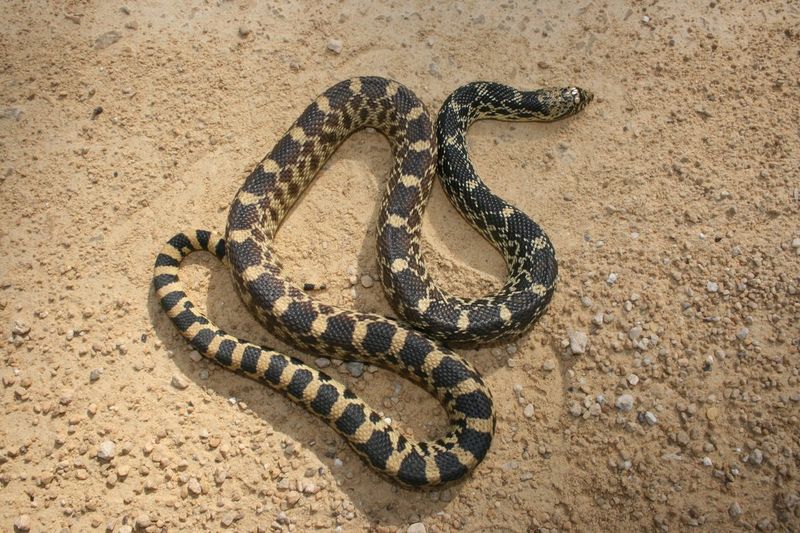
Bullsnakes are among the largest snakes found in Iowa, with some reaching lengths of over six feet. Their size and patterned appearance often lead to mistaken identity as rattlesnakes. However, Bullsnakes lack venom and are completely harmless to humans.
They play a crucial role in controlling the population of rodents and other small animals. Bullsnakes are known for their distinctive defensive behavior, which includes a loud hiss and the flattening of their heads to mimic cobras.
This mimicry is a fascinating adaptation that helps them deter predators.
Common Garter Snake
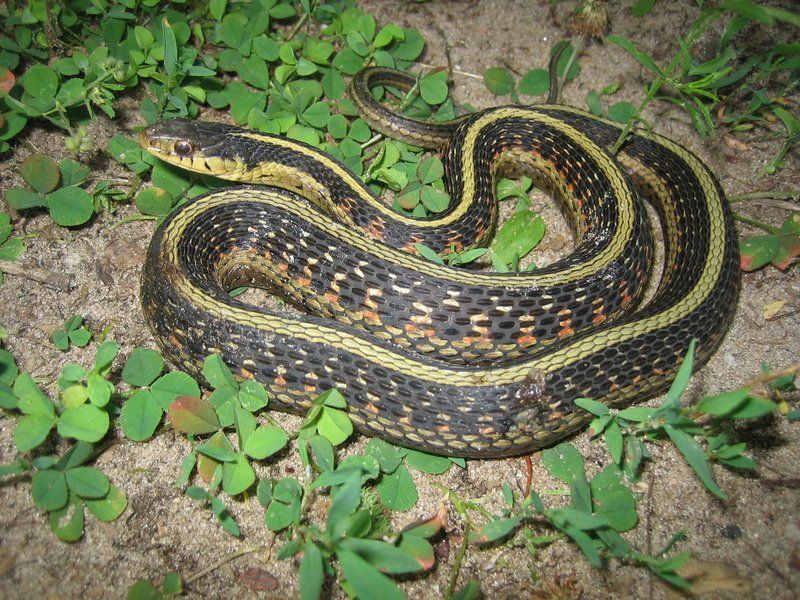
The Common Garter Snake is a frequent visitor to backyards and gardens across Iowa. Recognizable by their three yellow stripes running the length of their bodies, these snakes are harmless and often welcome due to their penchant for eating garden pests.
They are adaptable to a variety of environments, from wetlands to urban areas. A unique fact about garter snakes is their ability to emit a foul smell from their glands as a defense mechanism.
This olfactory deterrent, coupled with their agility, makes them a resilient species.
Copperbelly Water Snake
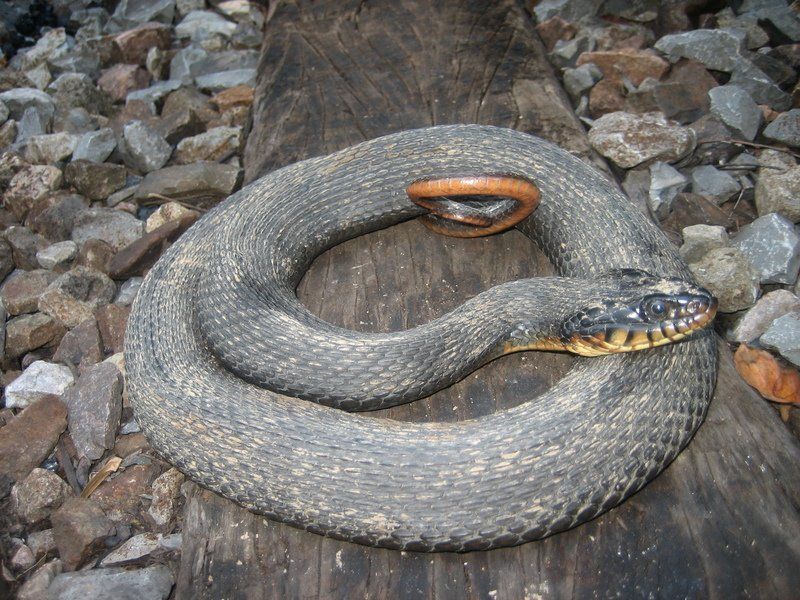
Copperbelly Water Snakes, with their distinctive reddish bellies, inhabit the wetlands of Iowa. These snakes are non-venomous and primarily aquatic, preying on fish and amphibians. Their dark dorsal coloration provides excellent camouflage against the muddy waters.
Despite their mild nature, they are often misidentified as the venomous cottonmouth due to their appearance.
An interesting behavior of this species is their basking habit; they often sunbathe on logs near the water, providing a picturesque view. Their presence is a good indicator of a healthy aquatic ecosystem.
Diamondback Water Snake
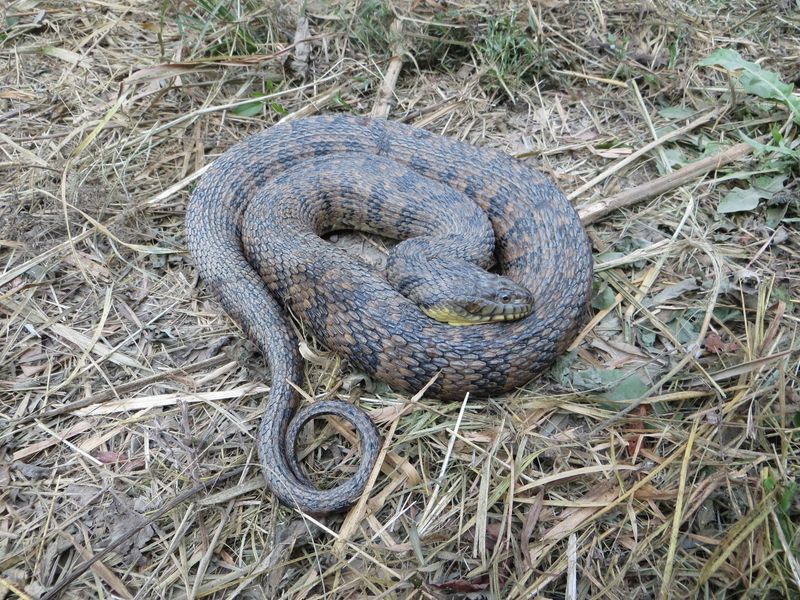
The Diamondback Water Snake, named for its distinctive diamond pattern, is a common sight along Iowa’s waterways. Though non-venomous, their aggressive nature when cornered can be intimidating. These snakes primarily feed on fish and frogs, thriving in aquatic environments.
Their keeled scales provide them not only with a rough texture but also an ability to blend into rocky riverbanks.
Fun fact: Diamondback Water Snakes have a keen sense of smell, which they use to hunt their prey efficiently. Despite their fearsome reputation, they play a vital role in the ecosystem.
Eastern Hognose Snake
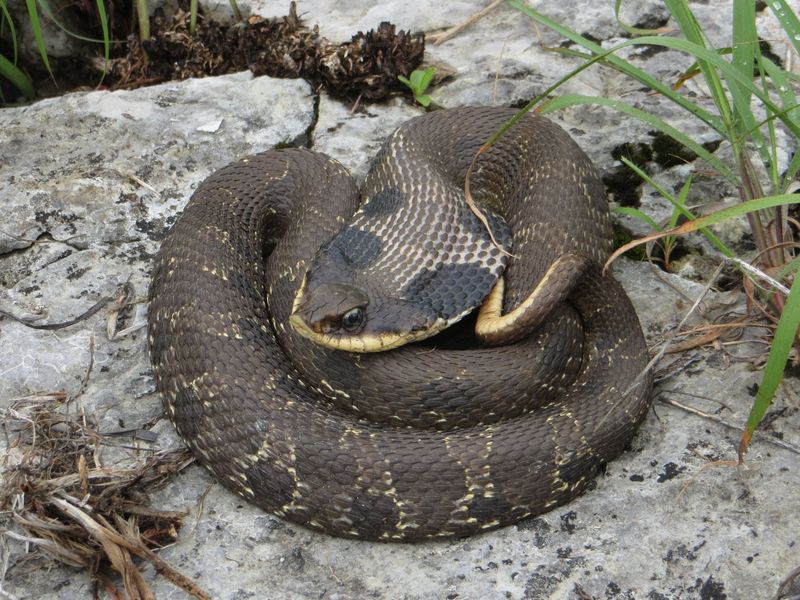
Known for its dramatic defensive display, the Eastern Hognose Snake is a master of deception. When threatened, it flattens its neck like a cobra and hisses loudly, though it rarely bites. Found in sandy areas and prairies, this snake has a unique upturned snout used for digging. Its coloration varies widely, often featuring blotches in shades of brown, gray, or green. Despite its fierce act, the Eastern Hognose is harmless to humans. Fascinatingly, if its bluff fails, it may play dead, adding to its theatrical repertoire.
Graham’s Crayfish Snake
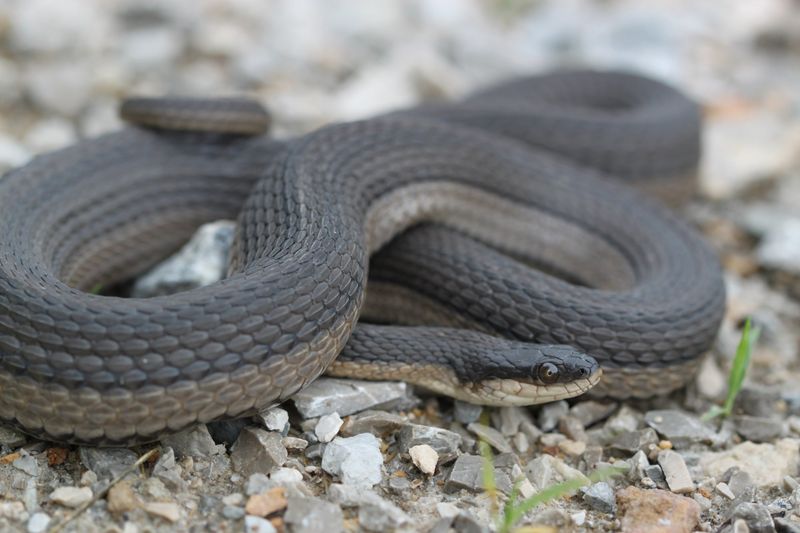
Graham’s Crayfish Snake is a semi-aquatic species often found near creeks, ponds, and marshes. Its diet primarily consists of crayfish, which it skillfully hunts. This medium-sized snake is typically brown with a lighter belly, featuring keeled scales that give it a rough texture. While not aggressive, it exudes a musky odor when threatened. Preferring solitude, it’s more active at dusk and dawn. Observing a Graham’s Crayfish Snake in its natural habitat offers a unique glimpse into Iowa’s rich aquatic ecosystems.
Lined Snake
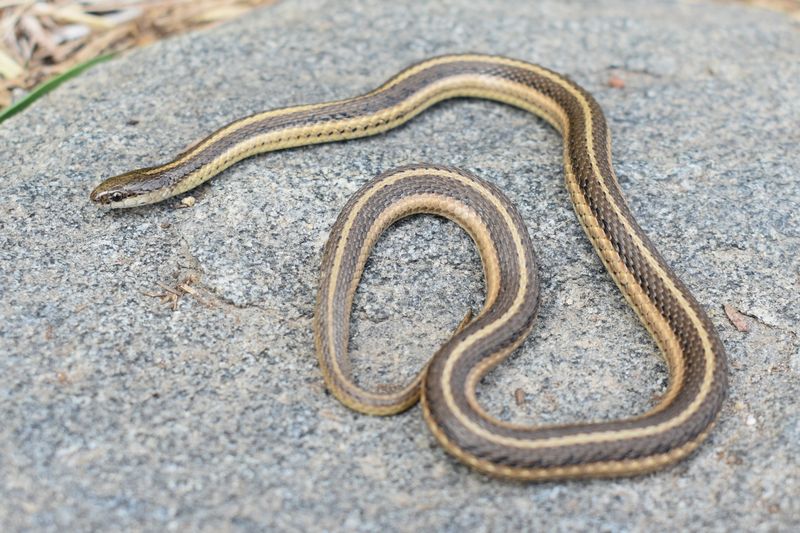
The Lined Snake is a small, secretive creature often mistaken for a garter snake due to its stripes. These snakes are typically found in urban areas, hiding under rocks or debris. With a diet consisting mainly of earthworms, they play a crucial role in controlling the local ecosystem. Their smooth scales and pale yellow underside make them identifiable. Despite their proximity to human habitation, they are rarely seen, preferring the cover of night to venture out. The Lined Snake’s elusive nature makes encounters rare and intriguing.
Milk Snake
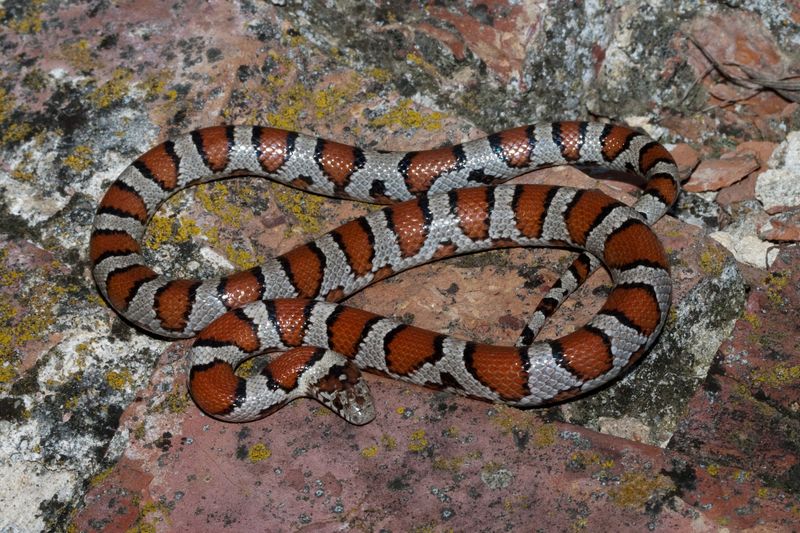
The Milk Snake is easily recognized by its striking pattern of red, black, and yellow bands. This non-venomous snake mimics the appearance of the venomous coral snake, a clever evolutionary adaptation. Found under logs and in rocky areas, it’s a common sight in Iowa’s forests. Known for their gentle disposition, Milk Snakes are often found in barns and outbuildings. Though they may rattle their tails when threatened, they pose no real danger. Observing a Milk Snake offers insight into nature’s wonders and adaptive strategies.
Northern Water Snake
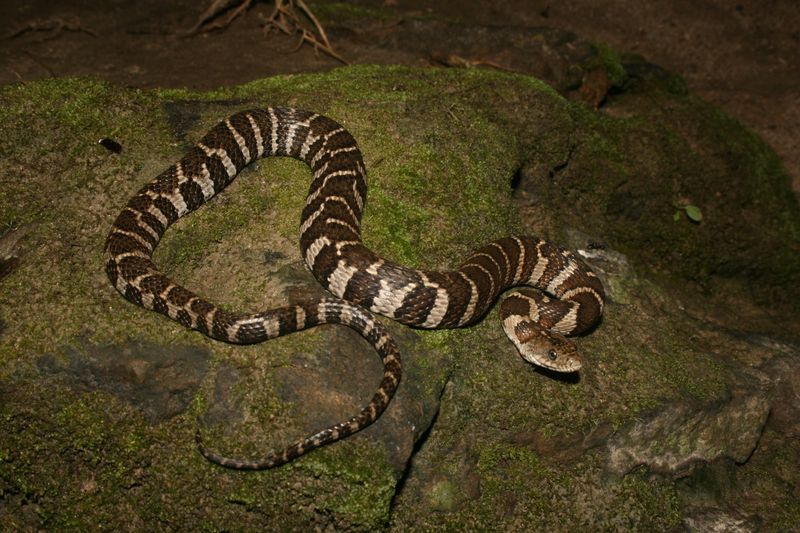
Often mistaken for the venomous cottonmouth, the Northern Water Snake is a harmless resident of Iowa’s waterways. Its robust body and dark crossbands make it a formidable sight as it glides through water. These snakes are excellent swimmers and primarily feed on fish and amphibians. During the summer, they bask on rocks or logs, providing opportunities for observation. Despite their non-threatening nature, they may bite if handled, releasing a foul odor as a defense mechanism. Their presence is a testament to Iowa’s diverse aquatic life.
Plains Garter Snake
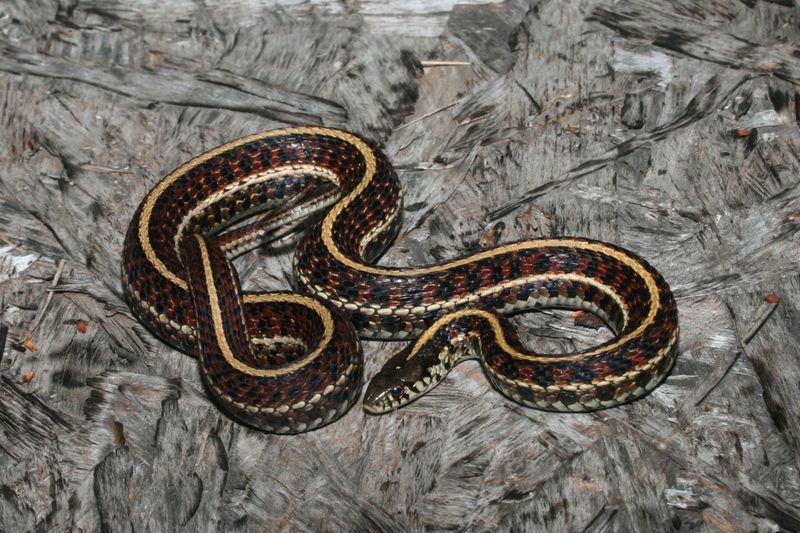
The Plains Garter Snake is a frequent sight in Iowa, inhabiting grasslands and wetlands. Recognized by its longitudinal stripes, it exhibits a variety of colors from dark olive to vibrant green. These adaptable snakes feed on small amphibians and earthworms. Known for their resilience, they brumate during cold months, emerging in spring. Their presence in backyards and gardens often surprises residents, though they pose no threat. With its adaptable nature and vivid appearance, the Plains Garter Snake enriches Iowa’s natural heritage.
Prairie Kingsnake
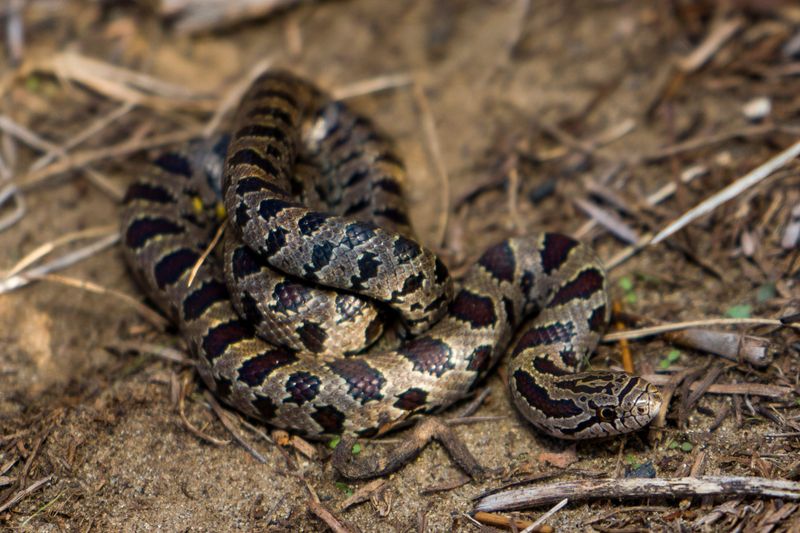
The Prairie Kingsnake, with its stealthy demeanor, is a master of disguise. This non-venomous snake is often found in farmlands and grasslands, where its earthy colors provide excellent camouflage. Although it appears intimidating, the Prairie Kingsnake is harmless to humans and feeds mainly on rodents, helping control the pest population.
Curious by nature, it can often be seen sunbathing on rocks or exploring crevices. Its gentle temperament makes it a fascinating subject for herpetologists and snake enthusiasts. Encountering one is a reminder of nature’s balance.
Racer
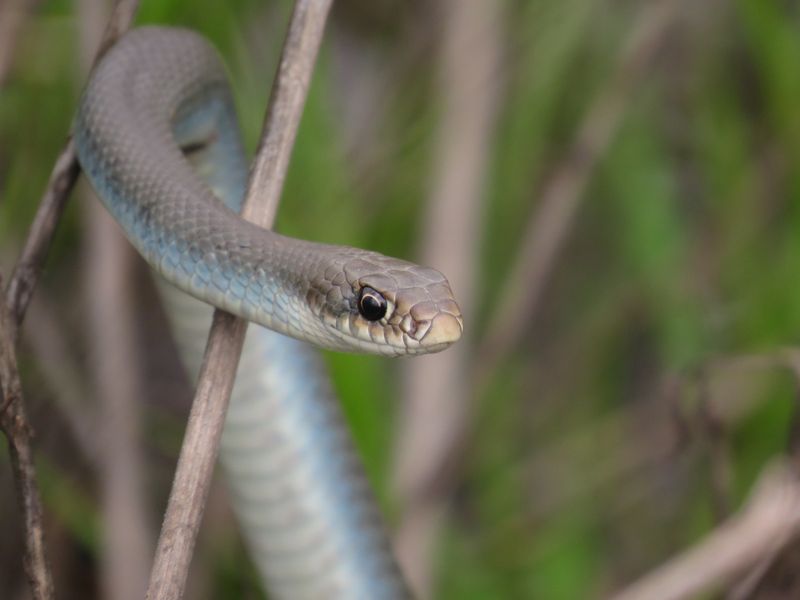
Known for its incredible speed, the Racer snake is a sight to behold. This agile serpent prefers open areas where it can sprint away from threats. Its slender body and sharp reflexes enable it to catch prey swiftly, making it an efficient hunter.
The Racer’s diet includes insects, frogs, and small mammals, contributing to the ecological balance. Observers often admire its graceful movements, which are reminiscent of a dancer in motion. Though quick to escape, the Racer is non-aggressive towards humans.
Redbelly Snake
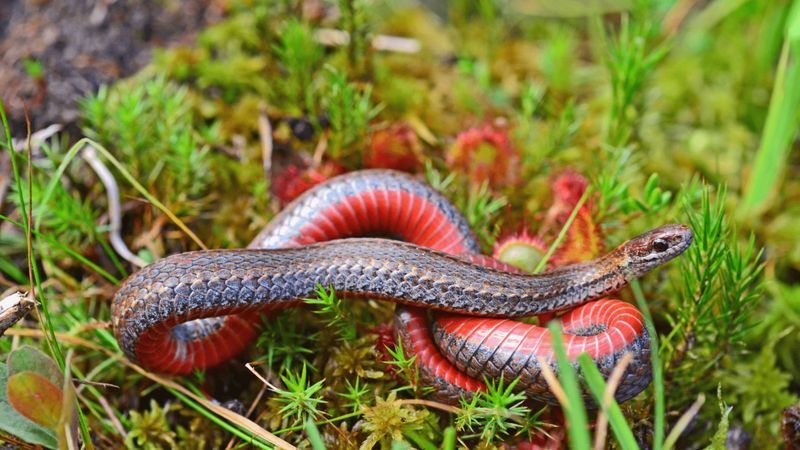
Beneath its unassuming brownish-grey exterior lies the Redbelly Snake’s secret—a striking red belly that surprises anyone lucky enough to spot it. This small, non-venomous snake is often found hiding under logs or leaf litter in moist environments.
Its diet mainly consists of slugs and insects, playing a vital role in controlling these populations. Redbelly Snakes are elusive and rarely seen, making each encounter a unique experience for wildlife enthusiasts. Their shy nature adds an element of mystery to the forests they inhabit.
Smooth Earth Snake
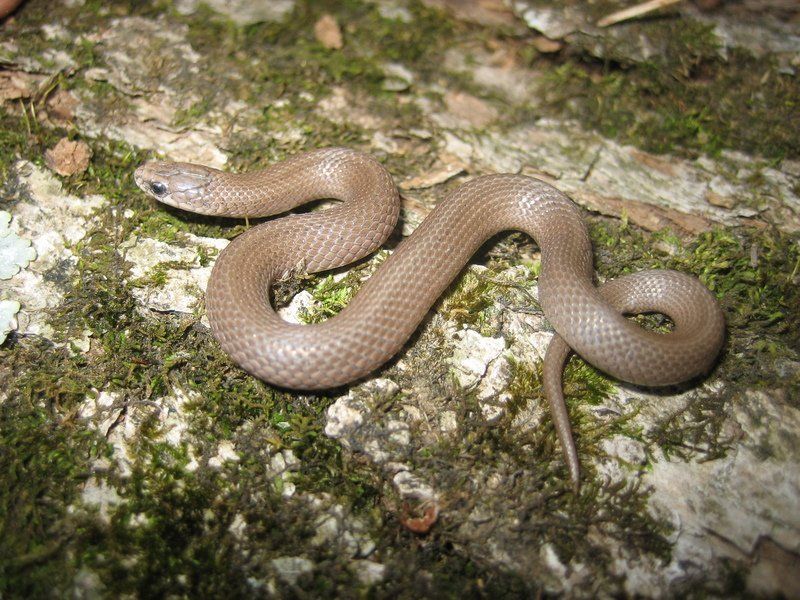
The Smooth Earth Snake is a tiny, secretive creature that thrives in loose, sandy soils. Its smooth scales and small size make it adept at burrowing, often leaving only a fleeting glimpse for observers.
This snake feeds on earthworms and soft-bodied insects, assisting in soil aeration and pest control. Its elusive behavior means it’s often heard rustling through leaves rather than seen. The Smooth Earth Snake’s understated elegance and vital ecological role make it a hidden gem in Iowa’s diverse snake population.
Smooth Green Snake
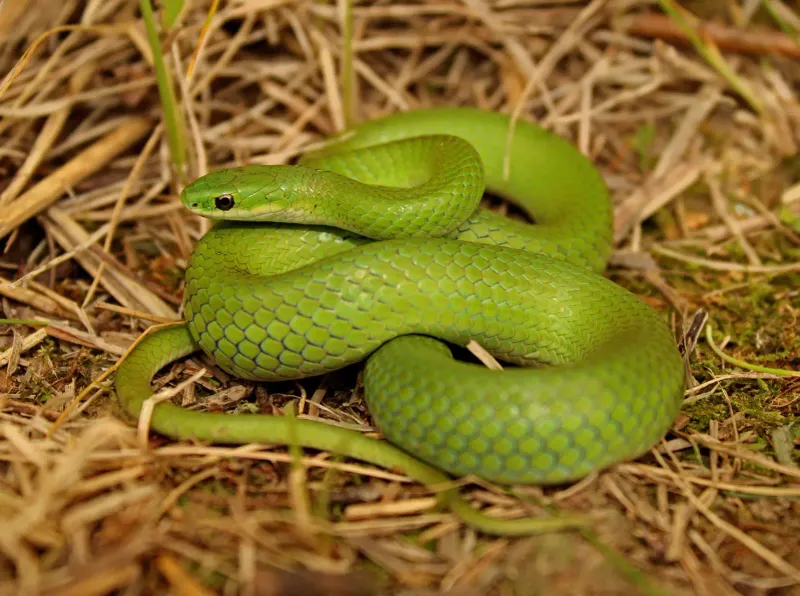
With its vibrant green hue, the Smooth Green Snake is a living jewel of the grasslands. This slender, non-venomous snake blends seamlessly into its leafy surroundings, often going unnoticed by predators and passersby alike.
Feeding primarily on insects and spiders, the Smooth Green Snake plays a crucial role in maintaining ecological balance. Its serene presence and gentle disposition make it a favorite among naturalists. Observing one is like finding an emerald amidst the foliage, a rare and delightful sight.
Speckled Kingsnake
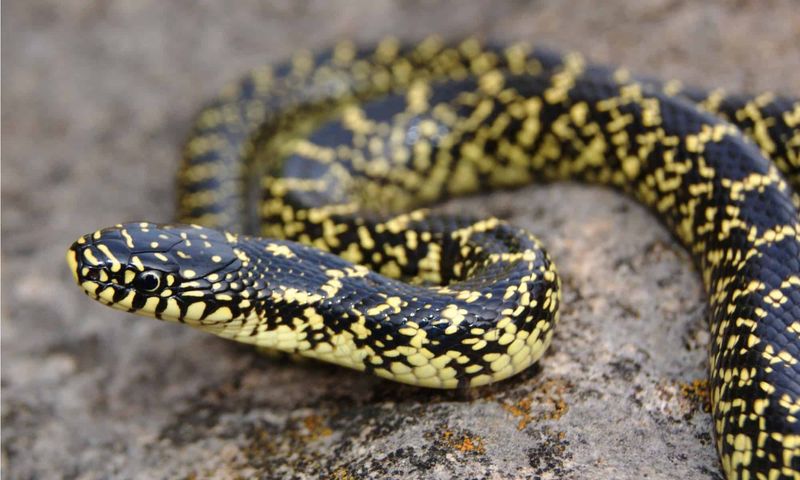
The Speckled Kingsnake, with its captivating pattern of yellow spots on a dark backdrop, is a visual marvel. This non-venomous snake is known for its ability to constrict and consume other snakes, including venomous ones, showcasing its resilience.
Commonly found near water bodies or in wooded areas, it contributes to controlling the snake population. Its robust nature and striking appearance make it a popular subject for wildlife photographers. The Speckled Kingsnake’s presence is a testament to nature’s intricate beauty.

